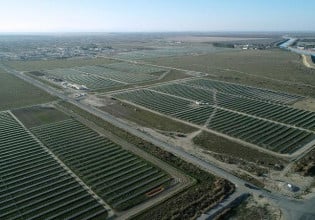Long Island Power Authority to Connect 75 Fuel Cells to Electric Grid
Under a $7.0-million program, the Long Island Power Authority (LIPA, Uniondale, NY) announced that it will connect 75 fuel cells to its electric grid at its West Babylon substation this summer. The program is intended to begin identifying and developing the measures and systems needed to facilitate the eventual use of fuel cells operating in parallel with, and contributing to the overall reliability and performance of, LIPA's electrical grid system.
Site planning is underway and construction is expected to start in July 2001. The fuel cells are being manufactured by Plug Power Inc. (Latham, NY) and are expected to produce over one million kilowatt-hours of electricity over the duration of the program, which is enough to power about 100 average-sized homes. By connecting the fuel cells directly to the transmission grid, the electricity created by the fuel cells will be distributed to customers through LIPA's electric transmission and distribution system. It will be the first large-scale use of fuel cells for this purpose in New York.
The Plug Power fuel cells are being made available to LIPA under the terms of an agreement that includes provisions for additional training, engineering services, and technical support to operate and maintain the units. In addition, LIPA and Plug Power will jointly develop the software necessary for remote operation, dispatch and monitoring of the fuel cells to support the future distributed use of fuel cells to support the electric grid.
“Fuel cells hold great promise, as an environmentally friendly electricity-generating technology,” said LIPA Chairman Richard M. Kessel. “We need to develop an understanding of how fuel cells can be integrated with our electric grid, and that's what the project will help identify. In turn, the information and experience gained through this program will help fuel cells continue to evolve as a technology that can be employed by electric utilities as a source of power, and by residential and commercial customers for their own on-site power needs.”






